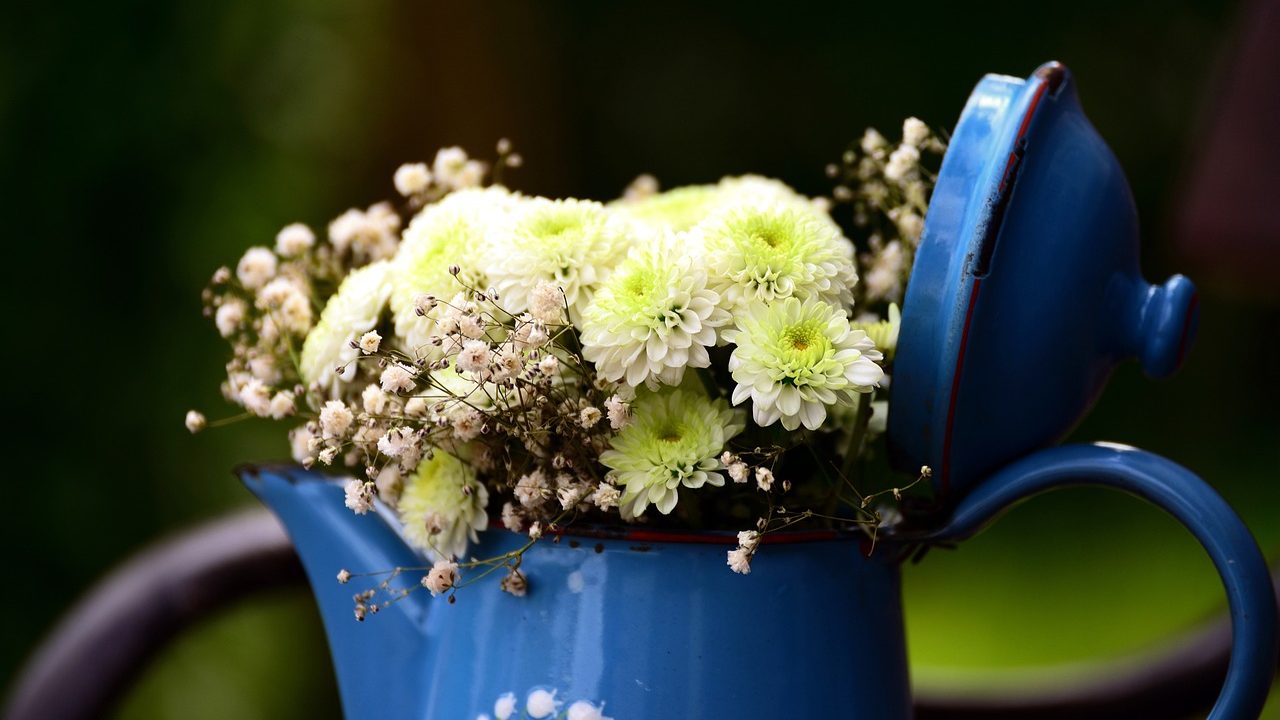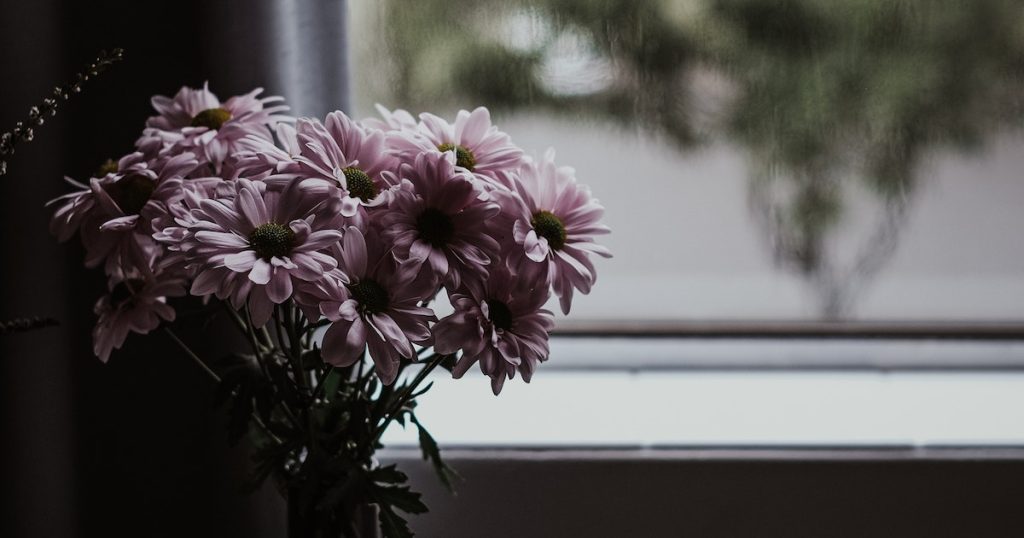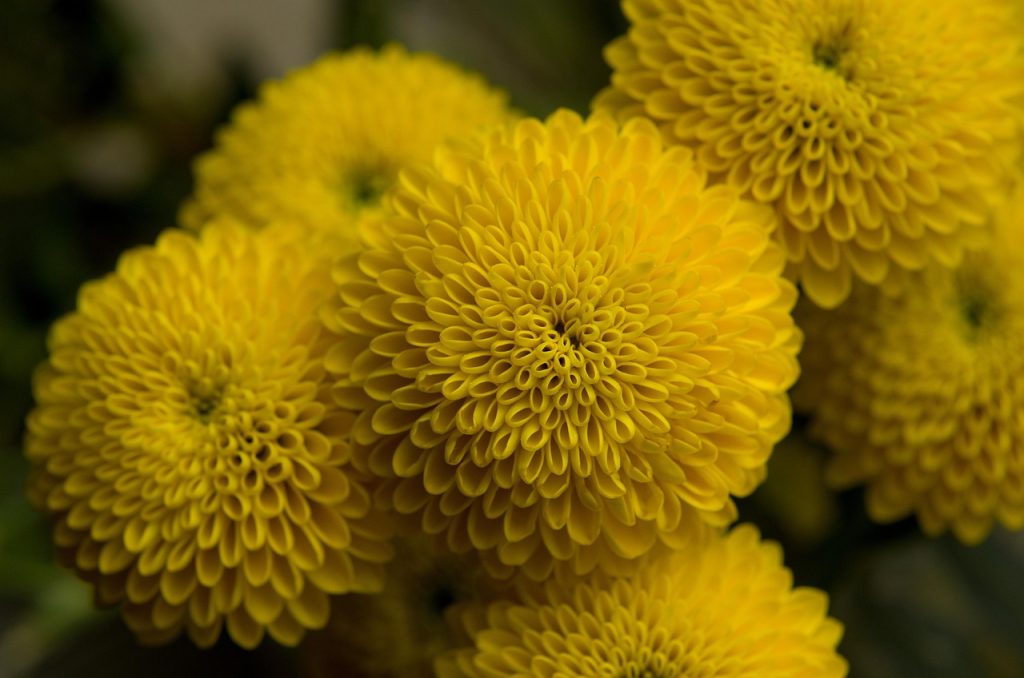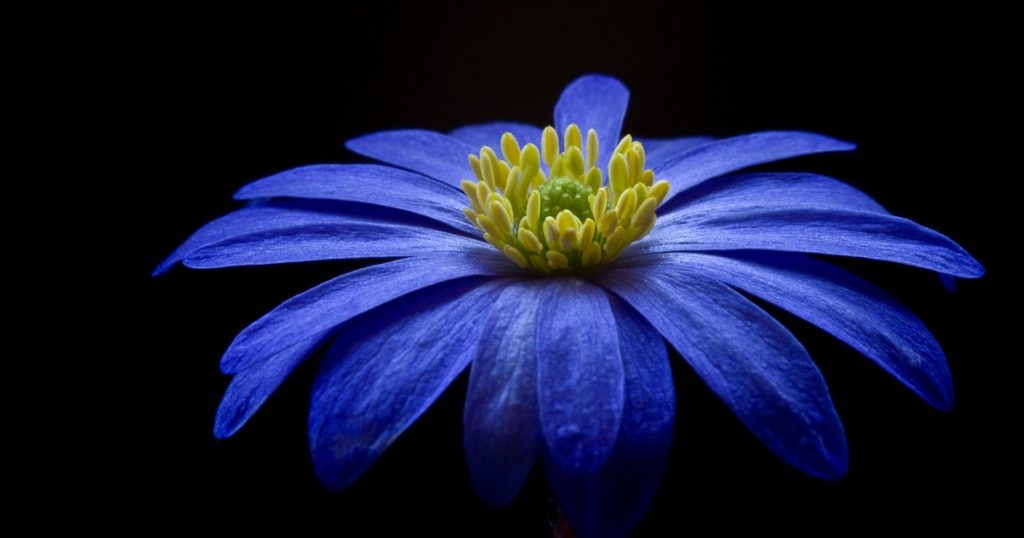If you’re worried about how to keep potted mums alive, just remember mum maintenance is not that hard. You can keep them flowering throughout the winter. We’ll go through how to care for them indoors and outdoors in this article. No matter where you choose to plant your mums, pick ones with many unopened buds. This will enable you to savor the blossoms for longer.
You only need to give potted mums ample sunlight, repot them to avoid root bounding, and water them frequently to take care of them. Additionally, keep in mind to promptly remove wilted flowers.
Let’s examine the best ways for you to take care of your potted mums. Keep reading!

Table of Contents
How to Keep Potted Mums Alive?
Mums grow well in containers, whether from a florist or a yard. Put them in a clay pot or a window box for the fall, either on their own or among other plants like blooming kale. Below, we’ll discuss how to keep potted mums alive:
Choose The Right Plant
Choosing the proper plant is the first step in ensuring the success of your potted mums. It will survive longer, and the repotting process will be less upsetting for a plant that hasn’t fully bloomed if you choose a plant with more buds than open blooms.
Repotting
Repotting is one of the greatest things you could do for your mums, to speak of course. Most mums in pots will have extremely compressed root balls after being in nursery containers. Your plant will thrive if you carefully separate the root ball and give the mum a suitable place in some new potting mix.
Water
Don’t overlook the water, either. Chrysanthemums like the sun’s strong rays, but the heat makes them thirsty. After repotting, give the plants a good bath and then water them every two days or if the soil feels dry. Don’t let your plants begin to wilt. After receiving fresh water, they’ll recover nicely, although the flower buds might not seem as vibrant or live as long.
Here’s a guide on watering mums correctly:
Sunshine
Mums require six hours or more of sunshine every day. If you reside in a tropical gardening zone, place your potted mums in a spot that receives some shelter to avoid sunburn. If the daytime temps are still in the 80s and above, shield your plants from the intense blazing sun to let the blossoms survive longer.
Pinch Your Mums
Pinching the stems of the mums is the key to producing a larger plant and increasing bloom output, and it should be done in the spring. Pinch the end of each shoot when it reaches a length of 5 to 6 inches, right above the leaves and 2 to 3 inches down the stem.
Every pinched stem will grow additional stems that may be pinched once more until they are an additional 5 to 6 inches tall. The development cycle naturally slows down around July, so keep on with this method until then.
Prune Your Mums
You may keep your mums for the upcoming season by trimming down dated stems as winter approaches. You could just see the stems regrow in the spring if you reduce them to an inch or two above the soil.
Deadhead Your Mums
Your mums’ development will be hampered if you don’t remove the outdated foliage and faded blossoms. Deadheading the wasted blooms before they become fully brown is a crucial step in maintaining the attractiveness of your mums throughout the fall. Simply remove any dead or discolored blossoms with a gardening shear to enable the plant to focus its efforts on flower production.

Are Chrysanthemums Perennial or Annual Plants?
Mums are both annuals and perennials, which is among the main concerns people have about them. Mums typically come in two varieties: hardy mums and florist mums, commonly known as cutting mums (also known as “garden mums”). Both varieties descended from a single originating parent, a Chinese mum that resembled a golden-yellow daisy.
The hybrids of today in all categories are the product of countless hybridizations between various species from China and Japan. The upshot of all such hybridization over hundreds of generations is several varieties of mums that serve two unique functions.
The different bloom types for florist mums include quilled, pompon, spiders, and more. Florist mums are only used as indoor plants and are only grown in greenhouses; they don’t generate many of the subterranean runners required to survive the winter. Outdoors and florist mums are utilized as temporary décor plants that will be taken away after the blossoms are gone or the cold destroys them. Regardless of the amount of protection you offer a potted florist mum you get as a present, don’t trust it to survive the cold weather outdoors.
On the contrary, garden mums do better in the cold. The majority of garden mums are far more durable than florist kinds. However, certain varieties are less resilient than others and can be harmed by a springtime frost.
How Should I Use Mums in My Garden?
Garden mums are ideal for large plantings due to their compact, mounded shape and abundance of blossoms. Work with only one or two colors to obtain the best impression from a distance. Another option is to create an ombre appearance by arranging a slow transition of similar hues. Mum clusters can stand out more by being surrounded by a variety of landscaping plants. Pick decorative grasses, berry bushes, sedum, or any conifer for structures.
If you want to use pumpkins and gourds in your fall décor, pick mums in shades of orange, golden, yellow, and creamy white. Consider bright pinks, lavenders, pure whites, or reds instead if you own several evergreen plants that give a background of varied hues of green leaves. With their striking hues, mums can liven up even the most uninteresting fall settings.
Select varieties based on their bloom periods to make the most of your mums. Coordinating bloom time with the duration of fall in your locality is also beneficial. A little autumn frost won’t harm most garden mums, but choosing the best varieties will let you appreciate them for as long as possible.

When Should Mums Be Planted?
Garden mums are perennials, but you may treat them like annuals since they only last a single season. Planting in the fall decreases the likelihood of surviving the cold since the roots aren’t given sufficient time to grow.
Mums should be planted in the spring to give them time to become established in the yard by fall if you prefer something a little more long-lasting and are prepared to give them the necessary maintenance, including mulching and pinching to promote dense growth and more flowers.
They will have a better opportunity of overwintering and flowering again the next year if you do this. Many plants would even put forth a few spring blooms before getting harvested for fall blooming.
How Much Sun and Water Do Mums Need?
Mums prefer a great deal of light, whether they are in a container or your yard. Mums do well in direct sunlight as long as they receive sufficient water. Pick a location that receives a minimum of six hours of sunlight every day. Lack of sunshine causes plants to grow tall and lanky and yield fewer, smaller blooms. Just remember: heat and light are different things. When summer temperatures are still present, avoid planting potted mums outside too early in the season. Plants are unlikely to thrive.
Don’t ever allow freshly planted mums to wilt, and give them plenty of water. Give mums around an inch of fresh water each week once they’re rooted. Water more frequently if the bottom leaves appear limp or begin to go brown. Don’t wash the leaves; doing so might spread illness.
Which Kind of Soil Do Mums Prefer?
Mums do best on soil that drains properly. Fertilizer should be mixed into the soil to a depth of 8–12 inches if the soil will not drain well. Mums might also be grown in elevated beds full of a well-draining garden soil mixture.
Mums should be planted approximately an inch further than they were in the nursery container, taking care not to damage the roots in the process. Because of the shallowness of their roots, they dislike their competitors.
Until the weather turns cooler, plants planted in the spring should receive a 5-10-10 fertilizer once or twice per month. Don’t fertilize annual plants that are planted in the fall. High-phosphorus fertilizer should be applied to the plants you intend to overwinter to promote root development.
How to Overwinter Mums?
Following the initial severe frost, get mums ready for the winter. Straw or finely chopped hardwood can be used as a 4-inch mulch all over the plants. To tidy up the plant, remove just the dead blossoms and leave the branches alone. Waiting until spring to cut old stems will increase the likelihood that mums will survive.
Keep the plants inside if you want to keep them alive for the following year. This entails covering the pot and moving the potted plant indoors to an unheated garage or barn after removing the brown leaves and stems that are 3–4 inches long above the soil.
For the plant to remain inactive, this region has to be between 32 and 50 degrees Fahrenheit. If your mum plants are planted in the ground, you may either transplant them into a pot before the ground freezes or cover the area surrounding them with a thick layer of mulch.
To give your potted mum a great boost before spring, make sure to fill the pot with potting soil and organic fertilizers.
Types of Mums
If you believe that mums are only the candy-colored mulched plants frequently offered in front of supermarkets, think differently. Chrysanthemums come in a huge variety, all with their own special charm. Below, we’ve discussed some of the most popular ones.

Decorative Mums
These chrysanthemums sometimes referred to as “florist mums,” feature lengthy, closely interlocking petals. It could be reflex or incurve, with the petals curving up and inward toward the center of the flower. The most popular ornamental kinds include “Fireflash,” which has vibrant orange and yellow petals, and “Coral Charm,” which has vibrant purple, pink, and peach petals.
Pom-pom Mums
These button mums, sometimes referred to as “fluffy mums,” produce a large number of tiny, colorful flowers that are densely covered in petals. The pom pom chrysanthemum comes in several popular variants, including “Tinkerbell,” “Barbara,” “Patriot,” “Ruby Mound,” “Garnet,” and “West Point.” From July until winter, they all produce tiny, spherical blooms.
Single and Semi Double Mums
Due to their similar appearances, single and semi double mums are frequently mistaken for daisies. These mums have very close-spaced outer flower petals that range in number from one (single) to two to three (semi double).
These gorgeous 1 to 3-foot-tall mums are ideal for flowering across a garden wall. The most popular single and semi double kinds include “Single Apricot Korean,” which has peach-colored tones, and “Crimson Glory,” which has reddish-purple tones.
Spoon Mums
This particular variety of mums, which produces lovely spoon-shaped petals, is appropriately named. These little mums won’t take up a lot of room in your yard because they barely reach a diameter of 4 inches. The most well-known spoon mum is called “Kimie,” which features golden yellow petals arranged in a single row around a tight circular ring.
Quilled Mums
The sole difference between quilled mums and single daisies is their tubular petals. This is unlike the complete quill flower form, which is frequently only seen in mums used as decorations or by florists. The most popular types of quilled mums include “Mammoth Yellow Quill,” which has yellow spikes, and “Seatons Toffee,” which has red spikes that resemble fireworks.
Anemone
The lengthy petals of the “Anemone” mom are similar to those of the “Spider” and “Spoon” mums, although flatter. This mum has one or more rows of flat, solitary petals that are topped by elevated centers that contain small disc florets.
The florets often have a deeper hue. Like “Spoon” mums, these adorable miniature blossoms only reach a diameter of 4 inches. The most popular anemone types are “Dorothy Mechen,” which has blooms that are a light shade of purple, and “Adrienne Mechen,” a close relative with pink blossoms that fade into beautiful white flowers at the ends.
Spider Mums
Spider chrysanthemums resemble anemone and quilled mums in appearance. Their slender, spider-like petals are the only thing that sets them apart. The most popular spider mums include “Western Voodoo,” with its orange and yellow blooms, “Yellow Rayonnante,” with its curving petals, and “Seiko Fusui,” with its lengthy, spider-like yellow petals.
Final Thoughts
If you’re wondering how to keep your potted mums alive, then this article’s tips will prove useful. It’s easy to care for potted mums, but there are a few things you must always keep in mind to ensure they do not get neglected. Happy gardening!
Recent Posts
Have you found yourself wondering, 'why is my bamboo growing so slow?' Despite the fact that bamboo plants are remarkably fast-growing, it can sometimes take months (or even years!) to see any signs...
Miracle-Gro is a huge help when you are trying to get decent yields out of your plants or if you want them to thrive. However, you may have noticed that a single dose of fertilizer does little to...
